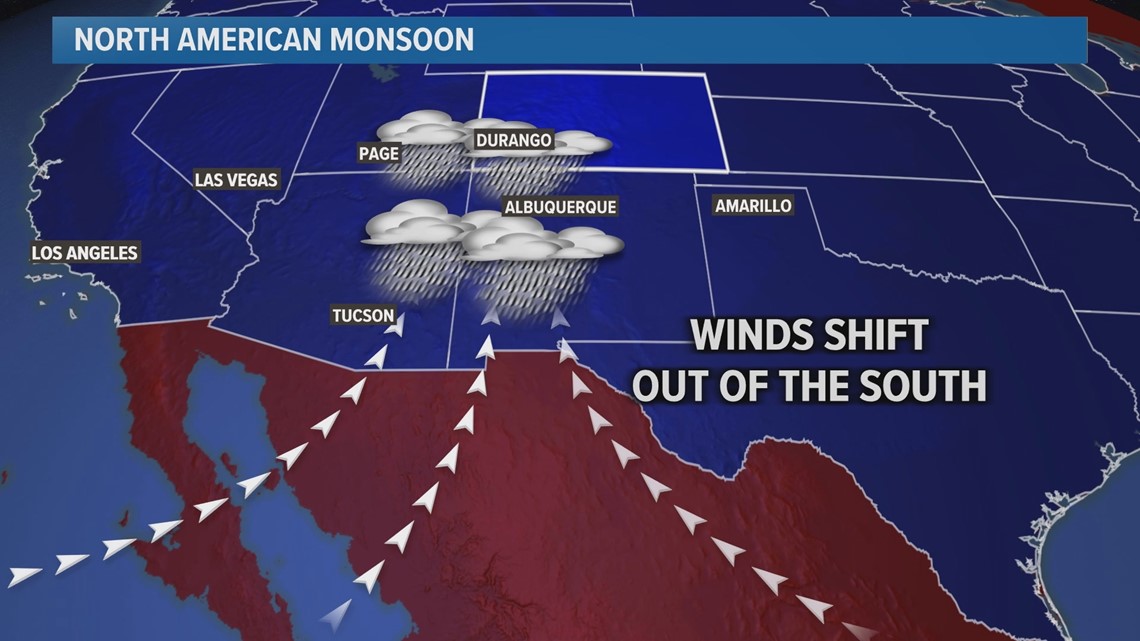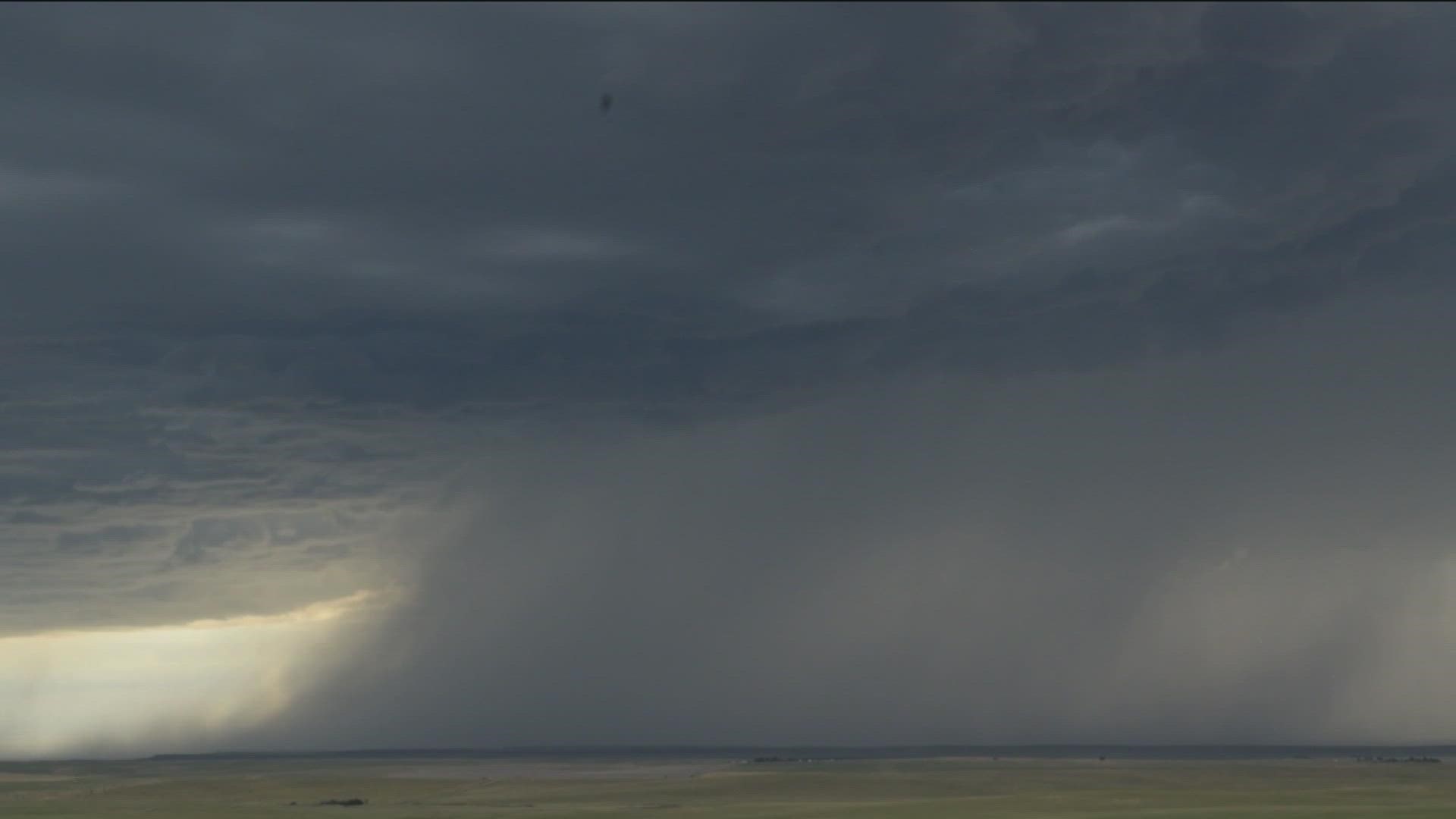BOULDER, Colo. — In most summers, a shift in the wind pattern called a monsoon brings consistent rain to parts of the desert southwest including Arizona, New Mexico, parts of Utah and the southwest part of Colorado.
The rainfall from the summer monsoon could really help water managers plan, but it would have to be predicted months in advance.
“So they have to make water management decisions in April, this is even before the peak of the runoff from the snowpack," said Adreas Prein, an atmospheric scientist with the National Center for Atmospheric Research (NCAR). "They have to decide how will they use the runoff during the summer season.”


Prein said rainfall has very little impact on water levels in our reservoirs, but if they knew there was going to be a big monsoon coming in the summer, they could release less water in the spring.
But he said the monsoon is very inconsistent and erratic.
“Currently they don’t have any skillful prediction for the summer monsoon," he said. "They have to make basically a blind prediction of how much rain they will get in the summer.”
So Prein and his team developed a new method for predicting the monsoon. Their forecast modeling keys in on changes in low level moisture coming from the Gulf of Mexico and the east Pacific.
Most current prediction methods focus more on how the monsoon low and the subtropical high are setting up, total precipitation or quantitative precipitation forecasts along with other upper level meteorological factors.
Prein said his method can be applied to the low level dew point, humidity, and precipitable water forecast from the European weather forecast model.
He tested the accuracy of the new method against historical forecasts, and he said his was far superior to any other monsoon predictions.
Another way we could benefit from better monsoon predictions, Prein said, would be to build different infrastructure to capitalize on harvesting monsoon rains. Our country's current systems are geared towards collecting snowmelt, which is more predictable and easy to measure while it's stored in the mountains over the winter as snowpack.
But as snowpack levels have been steadily declining over the last 40 years, collecting rainfall in a similar way might make more sense.
"The problem with that is that we really don't know how climate change might impact the monsoon in the future," said Prein. "I think if you wanted to spend lots of money on building new infrastructure, you would have to have more certainty."
He hopes this new method will not only help water managers in the future, but also wildfire managers. It’s already predicting slightly above average rainfall this summer.
“New Mexico is bone dry. Arizona is in a similar situation and we’ve already had massive fires this season," he said. "So having a wet monsoon season on the horizon, I’m really hopefully that this will help with the fire risk in those two states.”
Often times it takes years for scientific research to be applied in the real world, but the Bureau of Reclamation, which partially funded the research, said they will be evaluating this new method this year in the Colorado River and Rio Grande basins.
MONSOON PREDICTION RESULTS
Because of all the variables that go into the mechanics of a monsoon season, previous predictions have been lacking, although they have been improving through the years.
The 2022 monsoon forecast from the National Oceanic and Atmospheric Administration (NOAA) actually aligns very closely to the new NCAR method, calling for a slightly better chance at above average precipitation over the summer.
But the previous two years are good examples of how complex monsoon forecasting can be.
Prein said when the El Niño weather pattern is in the cold phase known as La Niña, it tends to favor an active monsoon season. That may have been one of the leading drivers behind a forecast for average precipitation during the 2020 monsoon.
By September of that year, meteorologists were jokingly calling the 2020 season the "non-soon" instead of the monsoon. It not only yielded below average precipitation, it was one of the weakest on record.
NOAA followed that forecast up in 2021, calling for slightly below average precipitation. But by September of that year, the meteorologists were calling that one the "super monsoon".
According to the National Weather Service in Phoenix, the 2021 monsoon was the 9th wettest on record.
SUGGESTED VIDEOS: Severe Weather

